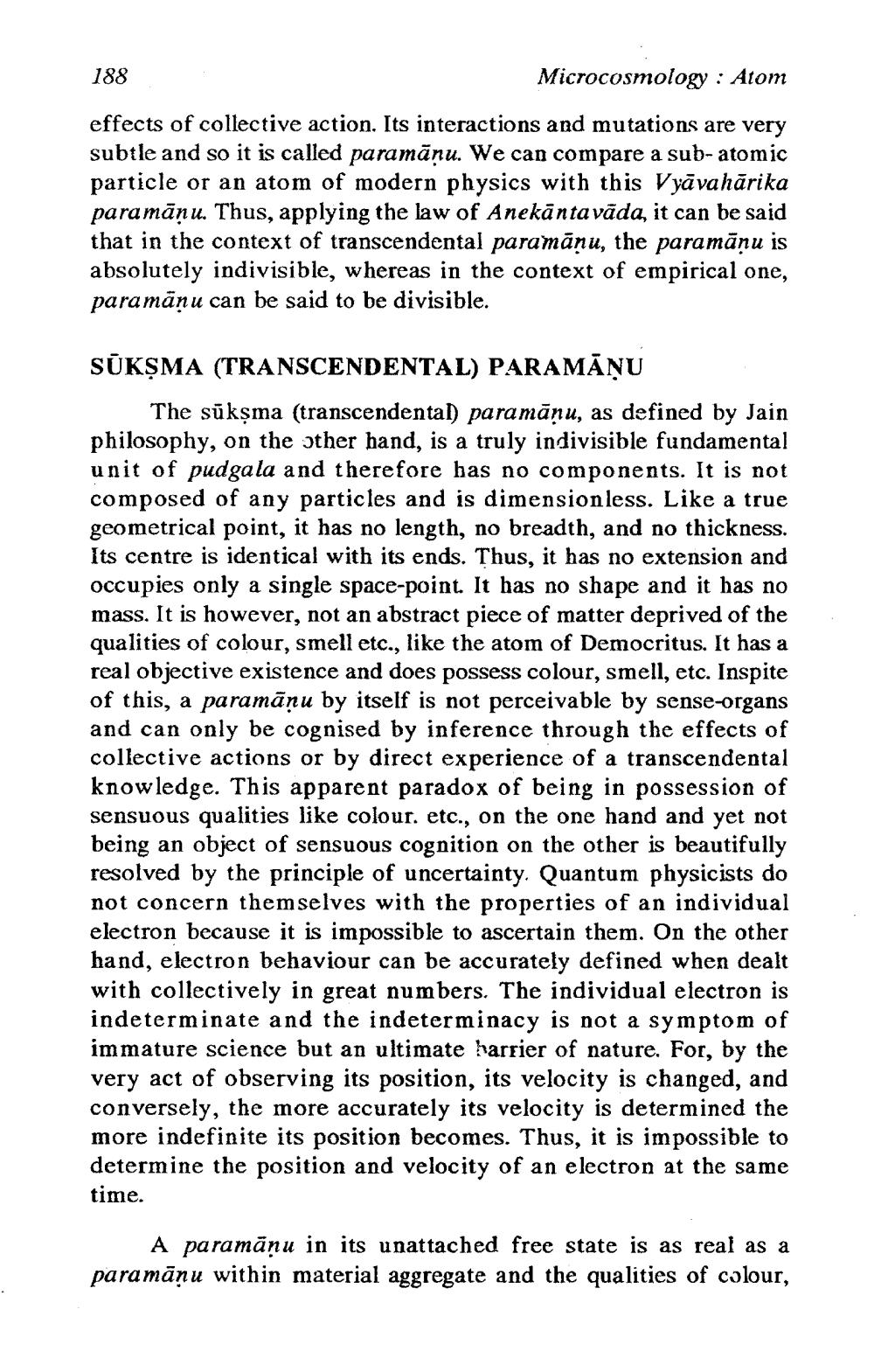________________
188
Microcosmology : Atom effects of collective action. Its interactions and mutations are very subtle and so it is called paramānu. We can compare a sub-atomic particle or an atom of modern physics with this Vyāvahārika para mānu. Thus, applying the law of Anekāntavāda, it can be said that in the context of transcendental paramāņu, the paramāņu is absolutely indivisible, whereas in the context of empirical one, para mānu can be said to be divisible.
SŪKŞMA (TRANSCENDENTAL) PARAMĀŅU
The sūksma (transcendental) paramānu, as defined by Jain philosophy, on the other hand, is a truly indivisible fundamental unit of pudgala and therefore has no components. It is not composed of any particles and is dimensionless. Like a true geometrical point, it has no length, no breadth, and no thickness. Its centre is identical with its ends. Thus, it has no extension and occupies only a single space-point. It has no shape and it has no mass. It is however, not an abstract piece of matter deprived of the qualities of colour, smell etc., like the atom of Democritus. It has a real objective existence and does possess colour, smell, etc. Inspite of this, a paramānu by itself is not perceivable by sense-organs and can only be cognised by inference through the effects of collective actions or by direct experience of a transcendental knowledge. This apparent paradox of being in possession of sensuous qualities like colour, etc., on the one hand and yet not being an object of sensuous cognition on the other is beautifully resolved by the principle of uncertainty. Quantum physicists do not concern themselves with the properties of an individual electron because it is impossible to ascertain them. On the other hand, electron behaviour can be accurately defined when dealt with collectively in great numbers. The individual electron is indeterminate and the indeterminacy is not a symptom of immature science but an ultimate barrier of nature. For, by the very act of observing its position, its velocity is changed, and conversely, the more accurately its velocity is determined the more indefinite its position becomes. Thus, it is impossible to determine the position and velocity of an electron at the same time.
A paramānu in its unattached free state is as real as a paramānu within material aggregate and the qualities of colour,




